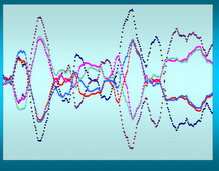
Here are four industry leaders and their contribution per employee (C/E) values. The last column is a rough estimate of how much the company needs on a daily basis to maintain their staff. That's right IBM requires about 187 million dollars a day 7 days a week 365 days a year to keep their staff happy, housed, warm and dry. And it is obvious that the most efficient company of all is MSFT. That's because their contented employees each generate 638732 dollars each on an annualized basis.
I show you this only to give you an idea of how much money we are talking about when we discuss these various companies. They are estimates of course and are acmitedly rough - does it really cost IBM 187 mill a day? Probably not - but they do own a lot of real estate and they do have a lot of employees and they are world-wide in scope - so maybe it's only 167 million a day. Does it really matter - it is a big number.
So I ask you - why don't these little numbers such as employee contribution and the large numbers such as "nut per day" filter into the stock price? Because all that Wall Street is interested in is "beat by a penny" accounting. The rest just doesn't matter.
So if you read an article that suggests that you look at EBITA, and GAAP, and GAP, and Bladdiblah Blah Blah Blah and projected future revenue growth vs past 6 months and crapita crapita crapita - just say - "Oh bull snot, did they beat by a penny or not?" And you won't go wrong. Because if they didn't all the rest of that crap is just that - crap.
You can make these estimates for any company vs. any other company but try to stay in the same industry - it wouldn't make sense to compare WMT to IBM. I use an average annual income in the software sector of about 80K per year including benefits. This is burdened by 2.5 (you need to make 2.5 bucks for every one buck you pay an employee). As I said quick and dirty and it is probably higher these days because I'm basing on figures I last used in the mid-90's.

1 comment:
The markets can be funny.
Post a Comment